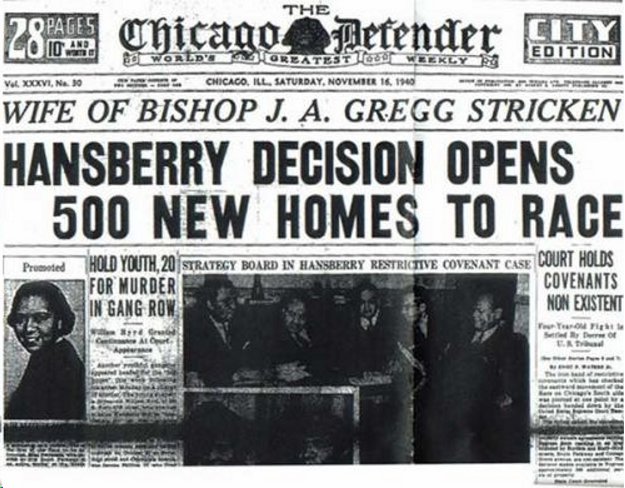A History of U.S. Media Segregation

From our content partner New America Media
Missing among the many reasons given for the enormous and unchanging racial divide regarding the fairness of the American judicial system is the legacy of the long history of media segregation. During America’s Jim Crow years not only did African Americans maintain lives apart from white America but so did their media. “To most white Americans the black press was a voice unheard, its existence unknown or ignored,” explained Enoch P. Waters, an editor at the Chicago Defender, once one of the leading black newspapers. “It was possible for a white person, even one who believed himself well informed, to live out his three score years and ten without seeing a black newspaper or being aware that more than 150 to 250 were being published throughout the nation.”
The consequence, not unsurprising, is that the children and grandchildren of African Americans from that era inherited a deep suspicion of the reporting by mainstream media despite its efforts to populate its ranks with minority members. As it is the media, for better or worse, that delivers and interprets the news of the various recent and controversial grand jury decisions, the selective perceptions of whites and blacks, shaped by different historical media experiences, feed their radically different interpretations of events.
It was for good reasons that black America had its own press. Until the civil rights movement made its mark, African Americans were absent from the pages of the nation’s white newspapers unless they were accused of a crime. The important events of their lives such as graduations, marriages, and deaths were not commemorated in the white press. The useful news African Americans wanted about church, schools, entertainment, sports, not to mention politics, was nowhere to be found. It was in this capacity that the Chicago Defender and other members of the black press built their initial role.
But the Chicago Defender, the Baltimore Afro-American, the New York Amsterdam News, the Pittsburgh Courier, and other black newspapers grew to have circulations beyond their cities and an influence greater than their press runs would lead one to believe. “They were—our internet. They were our cement that helped keep us together,” recalled veteran reporter Vernon Jarrett, whose Negro Newsfront was the first daily radio news broadcast in the United States created by an African American.
The civil rights movement made it impossible for the white press to continue to ignore the black community. Not only did the best black media staffers migrate to the mainstream media but also so did advertisers. Younger black readers, particularly those for whom the civil rights movement was a moment in history, grew to consider the black press stodgy, boring, and irrelevant to their lives. Falling circulation and dropping ad revenues and soon the golden days of the black press were over.

But during its heyday a separate black press had drawn significant and long lasting conclusions from the events of the day, different from those of the white mainstream press. For instance when Congress passed the 1957 Civil Rights Act the white press, except in the South, heralded its passage. The wire services called the bill’s passage “history-making” because Congress had not approved a civil rights measure since 1875, and the New York Times hailed it as “incomparably the most significant domestic action of any Congress in this century.”
The black press warned readers that what President Eisenhowe would soon sign into law was, in the words of journalist Ethel Payne, “the battered, almost unrecognizable version of the civil rights bill” and that Congress had passed it only “after virtually all the teeth had been pulled from the original administration version.”
The Panglossian attitude displayed by the white press toward the act highlighted the segregation of the nation’s press. It also reflected the sense among many whites that supporting civil rights was a benevolent gesture, whereas blacks viewed their struggle as an effort to obtain rights that were owed them. As a result, the mainstream media that had heralded Brown v. Board in 1954 and later praised the passages of the Civil Rights Acts in 1957 and 1964 did so for their historic momentousness without focusing on the restrictive elements found in the details.
White readers were thus left with an impression of steady judicial and legislative progress on race issues. But blacks, clued in to the limitations of these victories by the reporting of their newspapers, were not so sanguine. In many ways the white press was setting up its readers for bewilderment in the coming years when blacks expressed their frustration and rage at the lack of change, and now at the sense of a judicial injustice when it comes to the use of force by police. It is an inheritance from the history of a segregated media.
Author Bio:
James McGrath Morris is the author of Eye on the Struggle: Ethel Payne, The First Lady of the Black Press, which will be published in February.
From our content partner New America Media





























































































































































































































































































































